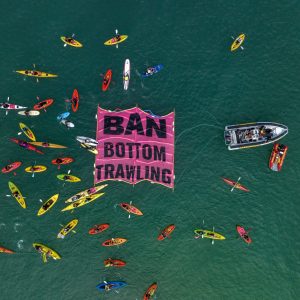This article was written prior to the release of the Minister’s tarakihi decision on 19th September 2018.
LegaSea’s Time Out for Tarakihi campaign has closed with over 8000 people signing the petition urging the Minister to heed the best available science and cut commercial catches by 65%, so east coast stocks can rebuild to healthy levels within a reasonable time. We’re expecting Stuart Nash’s decision soon as it will apply from 1 October this year.

Tarakihi is an important catch for thousands of New Zealanders, yet the research shows that the stock is about 17% of its original size and collectively recreational fishers bring home less than 5% of the total fish harvested. It’s time to rebuild abundance so there is more and bigger fish in the water for future generations. We also want to be able to access a healthy fishery, not hunt for the crumbs left over from bulk commercial harvesting.
Research confirms what many of us have known for years, that tarakihi along much off the east coast of New Zealand are scarce. Low abundance of tarakihi currently means that half of the reported recreational fishing events were for bag sizes of one or two fish. This is unacceptable for a popular eating fish that used to be accessible to land based and boat fishers.
In our recent submission responding to the proposals for the future management of tarakihi on the east coast we urged the Minister to be bold. We emphasised the need for catch reductions, in line with the current Harvest Strategy Standards, that would double the stock size within 10 years. A Total Allowable Commercial Catch (TACC) reduction of 65% was required now to start the rebuild process and to comply with the Ministry’s own Standards.
Proposals to apply phased TACC reductions were rejected outright because they have failed in the past. Previous Ministerial decisions to rebuild the depleted bluenose fishery with phased reductions over three years were stymied by industry resistance and Ministry capitulation. Eventually the TACC reductions were applied, but not before the fishery had dropped to seriously low levels. We do not want to repeat this mistake with tarakihi.
The good news is that Stuart Nash has committed to sustaining fisheries for the long-term. Also, Nash has praised commercial fishing interests for their willingness to innovate. In their latest advertisements the industry has promised to raise the bar around innovation, sustainability, guardianship, transparency and environmental responsibility. That’s a big call considering the amount of trawling applied to catching tarakihi in mixed fisheries.
Tarakihi is the prime opportunity for the Minister and industry to do something meaningful to meet these very public commitments. From a New Zealand wide perspective, anything short of a 65% cut to commercial catches on the east coast and a commitment to reduce the environmental impacts of trawling on juvenile fish will be a failure.





